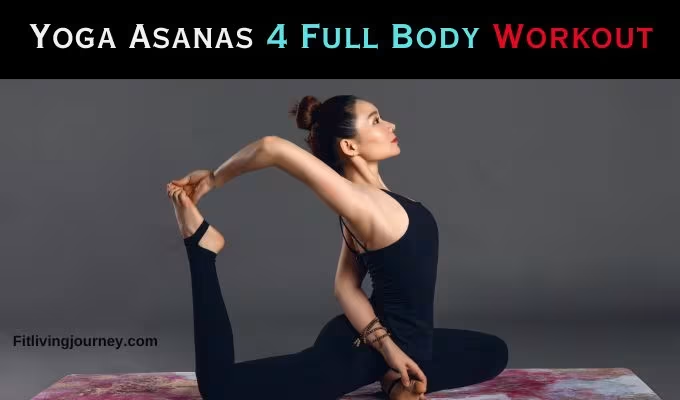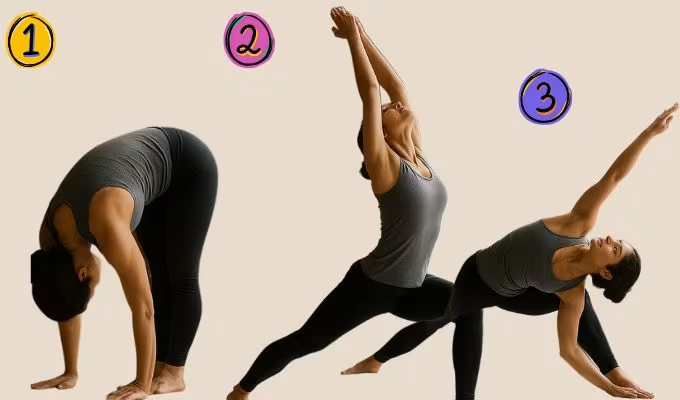Yoga asanas for a flexible spine
Today, we are trying to understand what are those asanas which we should do regularly as a routine.
Yogis always say that our spine has to be flexible.
So you have to do certain asanas where you are bending forward, backwards, sideways, twisting, stretching upwards, and bending downwards.
These types of asanas should be done daily.
There are also extremities asanas and meditative asanas.
So, we should know the group of asanas we need to practice regularly.
Who Should Perform These Asanas?
One thing we all have to be clear about is that we should be healthy—not sick or with any disease—to do these asanas.
If we are healthy, young or old, we should perform this set of asanas.
Surya Namaskar
Among this whole set, first comes Surya Namaskar. The whole concept is: rise early in the morning, before sunrise.
You should see the sun, look at the sun, worship the sun, take energy from the sun, and perform your asana.
Start by standing straight with hands joined together. Begin with a calm mind and a straight body.
Once you are composed, raise both arms and bend back—this is Hasta Uttanasana.
Then bend forward with arms stretched down—this is Hasta Padasana, trying to touch both palms to the ground, head in, and stay for some time.
Now lift one leg behind, palms on the ground—this is Ashwa Sanchalanasana. Then take the other leg behind.
This posture becomes Adho Mukha Svanasana, forming a triangle shape with your body.
Move forward and bring your body closer to the floor. Certain parts of your body touch the ground, making Ashtanga Namaskar. Hold this posture.
Next, lift your body up into Bhujangasana, bending back, head going up.
Then take weight on your arms, lift your back, bring one leg forward, then the other.
Return to Hasta Padasana, stand up straight, and come back to the original position.
There are different ways in which Surya Namaskar is done, sometimes with mantras.
But focus on your breathing—bend back: inhale, bend forward: exhale, stretch: inhale.
Keep your mind on breathing and repeat Surya Namaskar three times.
Sideways Spine Stretch – Konasana
Now we go to another asana—a twist of your spine while bending sideways. This is Konasana. Keep both legs apart.
During the day, we hardly bend sideways, so learn to bend sideways properly.
Inhale, take your right hand up from the side and bend to the opposite side.
Hand and head should stay together—don’t drop your head.
Try to pull your waistline Stay in this position. Come back and bring your arm down.
Repeat on the left side. Take your left hand up, twist fingers to keep the arm straight, move over your head, and bend sideways.
Again, pull your waistline, keep your hand and head together.
Stay for six seconds. While bending sideways, inhale and stretch the ribs. Come back to normal.
This sideways movement should be done daily.
Konasana Variation
Now we do another posture, also called Konasana, with a different movement.
Keep both legs apart Stretch your arms in front.
While inhaling, spread both arms sideways. Look at the tip of your right-hand finger.
Twist your whole body and bend forward to touch the toe with your right hand.
The other arm remains up, facing the ceiling, and your head looks up at the finger tip. This is a total twist and forward bend.
It benefits your upper areas—ears, tonsils, lymphatic system, thyroid—and of course, the head.
Come back to normal. Repeat the same on the other side.
Go down, look up at the tip of the finger, twist as much as you can, stay there, come back to normal, and relax.
FAQs
Why is spine flexibility important in yoga practice?
Ans. Spine flexibility is important because it supports overall mobility and nervous system health. Yogis emphasize it to keep the body agile and prevent stiffness.
Can Surya Namaskar be done by elderly people?
Ans. Yes, if the person is healthy (even if elderly), Surya Namaskar can be practiced gently with attention to breathing and posture.
How many times should Surya Namaskar be repeated?
Ans. It is recommended to repeat Surya Namaskar at least three times daily for effective results.
What should be the focus while doing these asanas?
Ans. Focus on breathing. Inhale while stretching or bending back, and exhale while bending forward. Awareness of breath enhances the effect of each movement.
Can Konasana help reduce side fat or waist stiffness?
Ans. Yes, Konasana targets the waistline and ribs, helping to stretch and tone the sides, which may assist in reducing stiffness and improving flexibility.


